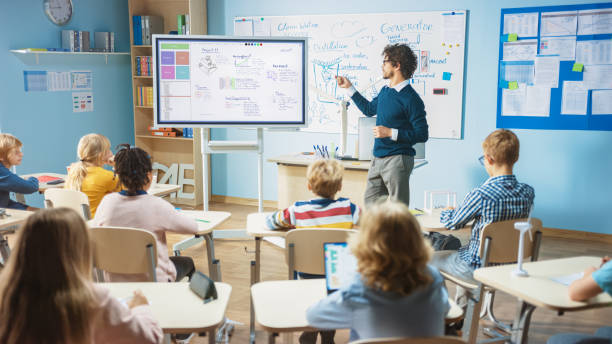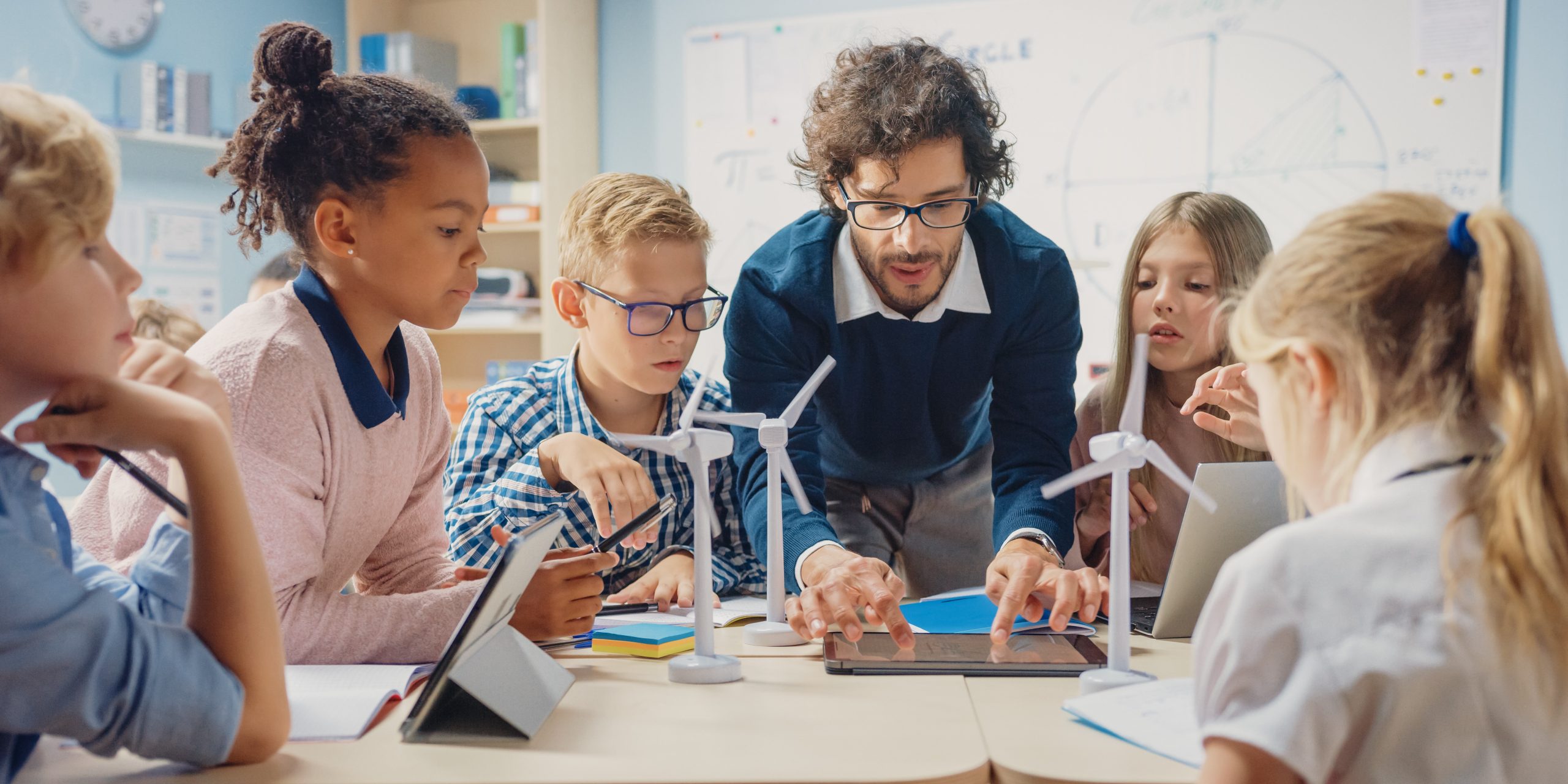Enroll in Primary Science Tuition Singapore for a Strong Science Foundation
Enroll in Primary Science Tuition Singapore for a Strong Science Foundation
Blog Article
A Comprehensive Overview to the Different Learning Methods in Main Science Instruction
The expedition of varied knowing techniques in main scientific research guideline offers a possibility for instructors to boost trainee engagement and comprehension dramatically. By examining hands-on understanding methods, inquiry-based strategies, and collaborative techniques, we can identify efficient techniques that deal with various learning designs. In addition, the integration of modern technology and differentiated guideline plays an essential function in cultivating an inclusive atmosphere. The concern remains: just how can these techniques be efficiently carried out in the class to maximize their influence? The answer lies in a better analysis of each technique and its implications for training science.

Hands-On Understanding Techniques
Hands-on discovering strategies play a pivotal role in main science direction, involving pupils in active exploration and experimentation. These techniques enable students to connect directly with materials and phenomena, promoting a deeper understanding of scientific ideas. By utilizing manipulatives, designs, and real-life experiments, instructors develop a setting where pupils can observe, assume, and check their concepts.
Such methods not only improve comprehension but also grow crucial thinking and problem-solving abilities. When students participate in activities like developing basic makers, planting seeds, or conducting chain reactions, they are encouraged to ask inquiries and look for answers through their own monitorings. This experiential technique assists to demystify complex clinical principles, making them more relatable and accessible.
In addition, hands-on discovering promotes collaboration amongst peers, as students often function in groups to carry out experiments or share findings. This teamwork not just enriches their understanding experience however also creates vital social skills. Ultimately, integrating hands-on methods in main science guideline promotes a long-lasting love of discovering and curiosity concerning the environment, laying a strong structure for future academic quests in scientific research and beyond.
Inquiry-Based Understanding
Inquiry-based learning is an educational method that urges students to ask concerns, explore phenomena, and build their very own understanding of scientific concepts. This technique shifts the focus from typical teacher-led instruction to a much more student-centered experience, where students take the initiative in their educational journey. By promoting inquisitiveness, inquiry-based learning promotes much deeper involvement with the product, allowing trainees to check out subjects in a significant context.
In technique, this approach commonly entails hands-on experiments, observations, and vital reasoning tasks that straighten very closely with the scientific method. Trainees are motivated to develop theories, layout examinations, and assess information, which grows crucial abilities such as analytical and analytical reasoning. The function of the teacher in this framework is to promote exploration, directing trainees through the inquiry process while encouraging independent idea and partnership.
Additionally, inquiry-based discovering supports a sense of ownership over the understanding procedure, encouraging trainees to go after knowledge proactively. This approach not just improves understanding of scientific ideas but also fosters a long-lasting love for discovering, furnishing students with the abilities essential to browse an increasingly complicated world.
Collaborative Learning Approaches
Joint knowing strategies empower trainees to take part in significant communications with peers, fostering a shared obligation for their instructional outcomes. In main scientific research guideline, these techniques encourage learners to function with each other to explore scientific ideas, address problems, and conduct experiments (primary science tuition Singapore). By taking part in team activities, trainees can utilize varied perspectives, enabling richer understanding and retention of scientific understanding
One secret facet of joint understanding is the focus on interaction abilities. Pupils have to articulate their thoughts, listen proactively to others, and negotiate ideas, every one of which are critical proficiencies in both real-world and academic contexts. This social interaction not only enhances their understanding of clinical concepts yet additionally advertises team effort and dispute resolution skills.
When trainees see the worth of their contributions within a team, they are original site extra most likely to take possession of their learning trip. In general, incorporating collective learning techniques in key scientific research instruction grows a dynamic discovering setting that prepares trainees for future scholastic and social challenges.
Innovation Assimilation in Science
The integration of modern technology in primary science guideline enhances learning experiences by supplying cutting-edge tools and resources that support numerous mentor methodologies, including collective understanding - primary science tuition Singapore. Using digital platforms, simulations, and interactive applications permits pupils to involve deeply with scientific principles, assisting in an extra hands-on strategy to learning
Virtual laboratories, as an example, make it possible for students to perform experiments safely and successfully, promoting inquiry-based knowing. These tools can imitate real-world clinical circumstances, permitting pupils to visualize complex processes that would be difficult to replicate in a traditional classroom setup. Furthermore, technology cultivates interaction and collaboration amongst students, as they can share findings and collaborate on tasks through on the internet platforms.
In addition, multimedia presentations and educational videos can enrich lessons by satisfying varied knowing styles, making abstract principles more available. Data evaluation tools additionally encourage students to accumulate and interpret scientific data, reinforcing vital thinking abilities. Generally, the strategic unification of innovation in key scientific research instruction not just enhances interaction but likewise prepares students for a technically advanced society, outfitting them with necessary skills for future scientific undertakings.
Distinguished Guideline Techniques
Separated guideline techniques are crucial for dealing with the varied needs of students in key science education. These approaches enable teachers to tailor their mentor approaches to accommodate varying capabilities, passions, and finding out styles within the class. By utilizing differentiated direction, instructors can produce an inclusive environment that promotes interaction and boosts understanding of scientific ideas.
One efficient approach is to make use of adaptable organizing, which permits pupils to team up with peers at comparable ability degrees or with differing perspectives. This method motivates peer knowing and promotes important reasoning. Furthermore, providing options in projects can empower trainees, enabling them to choose projects that resonate with their passions while still fulfilling curricular purposes.
Additionally, integrating tiered tasks is one more valuable method. By designing jobs with differing levels of intricacy, instructors can make sure see post that all trainees are appropriately tested, no matter their efficiency. Utilizing formative analyses to assess understanding more makes it possible for instructors to adjust their educational techniques dynamically, making dig this sure that each learner receives the support they require.
Ultimately, applying differentiated instruction methods in primary science education not just boosts trainee understanding outcomes but likewise grows an enthusiasm for science, preparing trainees for future scholastic pursuits.

Verdict
In summary, efficient primary scientific research direction requires a multifaceted strategy that incorporates hands-on learning, inquiry-based methods, and joint strategies. The combination of modern technology and set apart guideline better accommodates diverse understanding styles, promoting an atmosphere favorable to exploration and important thinking. By carrying out these strategies, teachers can boost student interaction and understanding, ultimately nurturing a long-lasting interest for science and questions. Such comprehensive methods are crucial for developing notified and interested future researchers.
The exploration of varied learning approaches in key science guideline provides a possibility for instructors to boost trainee interaction and comprehension substantially.Hands-on discovering methods play a critical role in primary scientific research direction, engaging trainees in active exploration and experimentation.Inquiry-based understanding is an educational technique that motivates students to ask inquiries, check out phenomena, and construct their very own understanding of scientific ideas.Collective discovering techniques empower pupils to engage in meaningful interactions with peers, fostering a common obligation for their educational outcomes. On the whole, including collective learning strategies in main science direction cultivates a vibrant knowing setting that prepares trainees for future scholastic and social challenges.
Report this page